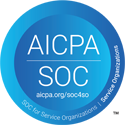

OSHA's Recent Policies and Proposals Reflect a Business-Friendly Approach Enforcement
July has been a busy month for the Occupational Safety and Health Administration (OSHA). The agency recently issued several regulatory proposals and policy updates which reflect a more business-friendly approach to workplace safety and enforcement.
Deregulation Proposals
Shortly after taking office, President Trump issued an Executive Order directing federal agencies to eliminate ten regulations for every new rule. On July 1, 2025, in response to the Executive Order, OSHA published 25 proposed rules aimed at deregulation. The proposed rules were part of the U.S. Department of Labor’s larger deregulation plan, which includes cuts to 63 existing regulations.
Key highlights of OSHA’s proposed rules include:
- Revisions to the Respiratory Protection Standard to remove the annual medical evaluation requirement for filtering facepiece respirators and loose-fitting powered air-purifying respirators
- Revisions to substance-specific respirator requirements to allow different types of respirators to be used and clarify policies and procedures for implementing respiratory protection programs
- Elimination of the Construction Illumination Standard
- Elimination of the COVID-19 Emergency Temporary Standard for health care settings
- A new regulation to exclude inherently risky activities from the scope of General Duty Clause enforcement
OSHA also published one final rule withdrawing an earlier proposal to amend the OSHA 300 Log by adding a column requiring employers to record work-related musculoskeletal disorders.
Notably, OSHA’s recent deregulation efforts do not include the withdrawal of the agency’s proposed Heat Standard, which was formally published last August. The agency held a series of hearings on the proposed Heat Standard in June 2025, and the public comment period closed on July 2, 2025. Given that OSHA initiated the rulemaking process during the Biden administration, the agency’s decision to continue the process was a surprise to many. Post & Schell’s Occupational Safety and Health team will be monitoring the status of the proposed Heat Standard in the coming months.
Stakeholders have until September 2, 2025, to comment on the proposed rules published on July 1st. Comments may be submitted online at regulations.gov. The website also permits members of the public to identify other rules and regulations for rescission.
Revised Penalty Guidelines
On July 14, 2025, OSHA published updated guidance on penalty and debt collection procedures. According to an agency press release, the update was made to minimize the burden on small businesses and increase prompt hazard abatement.
As part of the enforcement process, OSHA reduces penalty amounts based on an employer’s history, good faith efforts, size and immediate abatement of hazards. The updated guidance modifies the following penalty reduction factors:
- The maximum reduction for history was increased from 10% to 20%. Under prior guidance, only employers who had been inspected in the previous five years were eligible for a history reduction. The new guidance extends the history reduction to employers who have never been inspected by OSHA.
- Previously, employers with 1-10 employees were eligible for a 70% penalty reduction, and employers with 11-25 employees qualified for a 60% reduction. Under the revised guidance, employers with 1-25 employees are now eligible for a 70% reduction.
- The updated guidance clarifies the requirements for employers to receive a 15% Quick-Fix penalty reduction for taking immediate steps to correct a hazard.
The new penalty reduction factors are effective July 14, 2025. Any penalties issued prior to July 14, 2025, will remain in effect, but open inspections in which penalties have not been issued will be covered by the new guidance.
While the updated guidance is positive for employers, OSHA Area Offices will continue to enforce existing standards. OSHA prioritizes inspection of fatality and severe injury reports, which spiked during President Trump’s first term in office. Employers must continue to prioritize workplace safety and implement policies and procedures to reduce workplace hazards and injuries.
Post & Schell’s Occupational Safety and Health team counsels and advises clients on workplace safety and health issues, provides on-site support during walkaround inspections, and defends employers in OSHA enforcement proceedings. If you have questions regarding OSHA compliance, please contact Angela H. Sanders at 717-391-4436 or asanders@postschell.com.


